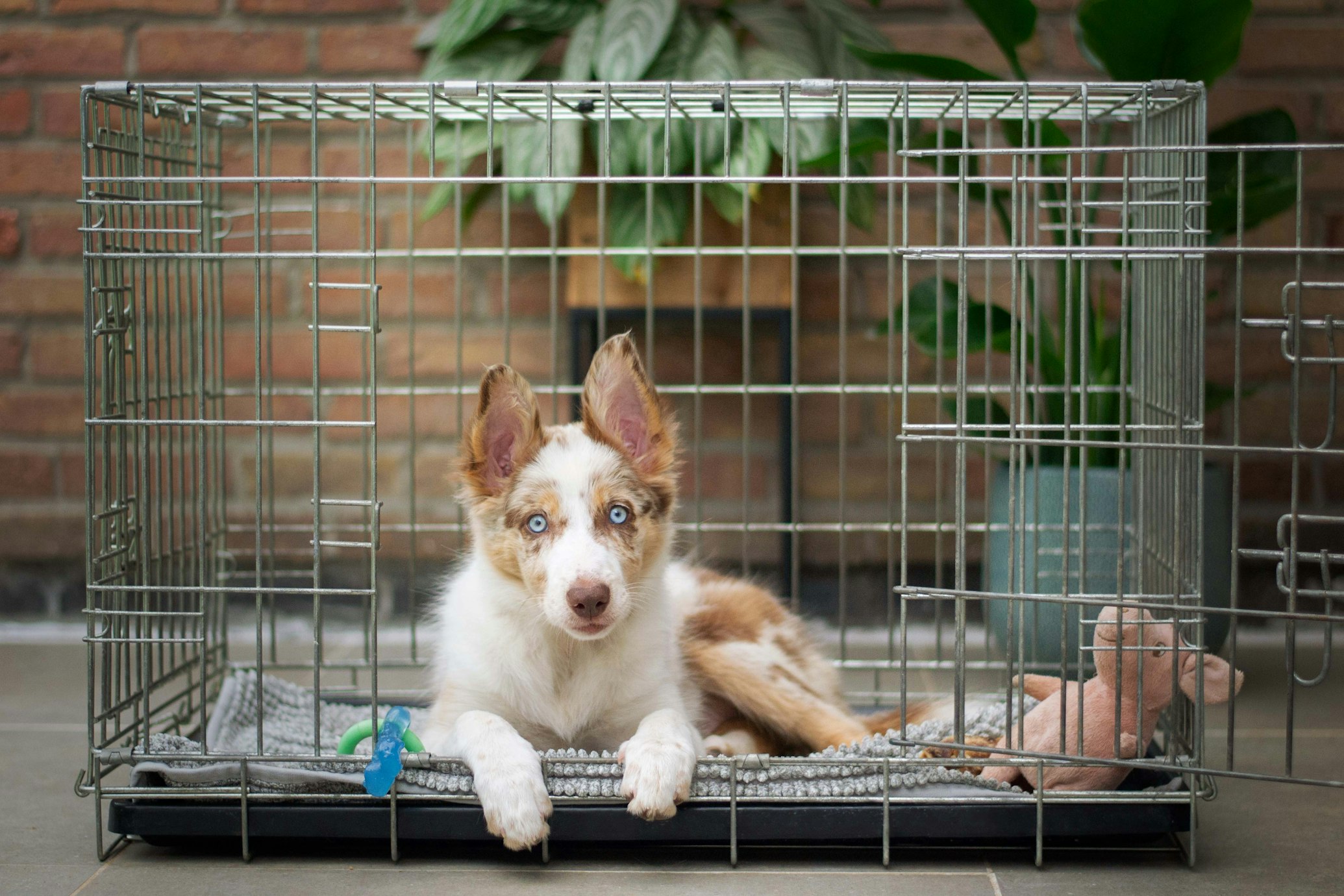Is It Cruel to Crate a Dog?
Tuesday, February 1, 2022 12:00:34 PM America/Los_Angeles
Many dog pawrents might wonder if it’s truly okay to crate a dog. After all, seeing your fur baby in a cage-like enclosure can seem cruel and unnecessary. But did you know that some doggos actually enjoy being in a crate? Read on to find out more about why crating is safe, if not important, for dogs.
Photo by Ayla Verschueren
What Are Dog Crates For?
Dog crates are used for a number of reason, including:
- Potty training
- Illness or injury
- Personal preference
- Emergencies
- Travel
- Vet visits
Why Crate Dogs?
Crates offer a protected space for dogs either while they’re resting or traveling. Believe it or not, some dogs enjoy spending time in a crate. Canines den in the wild to keep warm or cool as well as for added protection while they slumber. Domesticated dogs may continue to feel this ancestral urge even though they are safe and warm indoors. If you’re still not convinced, think of crates as doggie bedrooms. No one (or dog) should be locked in their bedroom 24/7. But used appropriately, a bedroom is a safe haven that allows you to have a space to call your own.
In addition, many dog owners have found it helpful to enlist crates for potty training. Dogs innately want to keep their crate clean and this in turn helps them stick to a potty schedule and learn where and where not to “go”. Crate training, or using a crate to facilitate potty training, helps dogs learn new potty routines quickly. If you plan on crate training your pooch, having an indoor pee pad like Bark Potty can help dogs to properly designate pet potty areas.
Keep in mind that even though crates are generally safe to use, dogs should not be kept locked in a crate for more than 4-5 hours for puppies and senior dogs and not for more than 6-7 hours for healthy adult dogs. Any canine will need time to adjust when beginning, so be sure to keep an eye on their behavior as they get acclimated to using a new crate.
What Kind of Dog Crate Should You Get?
Size is one of the most important criteria for selecting an appropriate crate. The rule of thumb is that a dog should be able to stand up and turn around comfortably in their crate. If your puppy is in the market for a crate, choose one that will be able to accommodate their adult size.
Beyond size, there are a couple of other considerations to take into account. Crates can either be hard or soft-sided and made of wire or plastic. Dogs who prefer a lot of visibility might prefer a wired crate versus a plastic one, which offers less visibility. Keep the crate comfy with cozy bedding to help your pup develop positive associations with their crate. This helps make it a convenient and portable safe space for your fur baby.
